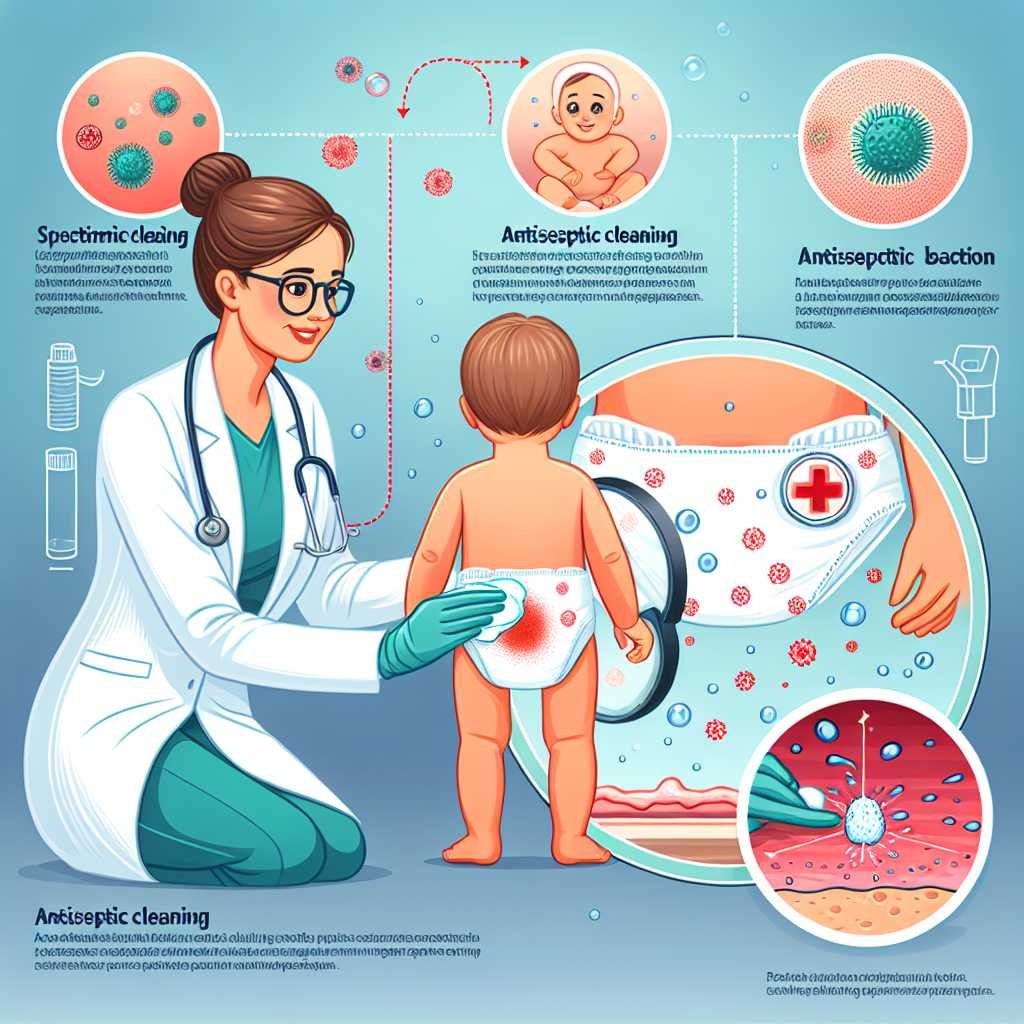How to Effectively Treat Diaper Dermatitis
Introduction
Diaper dermatitis, commonly referred to as diaper rash, is a skin inflammation that occurs in the area covered by diapers. This condition arises when a diaper—whether disposable or cloth—fails to adequately absorb moisture. When a diaper becomes saturated with urine, it can irritate the skin by keeping it damp and in contact with harmful substances like uric acid. While diaper dermatitis is most often associated with infants, it can also affect older adults, individuals with serious health conditions, and even astronauts—essentially anyone who uses diapers. This irritation is a classic case of contact dermatitis, where inflammation results from direct exposure to irritants.

Prevalence of Diaper Rash in Children
Diaper dermatitis is a common issue, impacting a large number of children. Historically, during the era of cloth diapers, the incidence of diaper rash ranged from 30% to 75% among infants. With the introduction of modern disposable diapers that effectively absorb moisture, this percentage has decreased. Nevertheless, diaper dermatitis still affects approximately 15% to 55% of children, particularly during their first year, with the highest incidence occurring between 9 and 12 months of age.
Understanding the Causes of Diaper Dermatitis
The onset of diaper dermatitis is not solely due to skin contact with urine. A significant factor is the simultaneous exposure to both urine and feces. When feces mix with urine, ammonia is produced, heightening the risk of skin irritation. This interaction, along with enzymes and bile salts present in feces, raises the skin’s pH, exacerbating the damaging effects of lipase and proteases.
Identifying Symptoms of Diaper Dermatitis
Symptoms of diaper dermatitis may include:
- Redness and swelling in the buttocks, thighs, and/or genital area
- Ulcers, blisters, or peeling skin
- Discomfort, pain, or itching in the affected area
Diagnosis of Diaper Dermatitis
Diagnosing diaper dermatitis typically does not require any specialized tests. Healthcare providers rely on the distinctive appearance of the rash, its location, the child’s age, and the use of diapers to confirm the diagnosis.

Factors That Increase the Risk of Diaper Dermatitis
Several factors can heighten the likelihood of developing diaper dermatitis:
- Skin Sensitivity: Children’s skin is often immature and more susceptible to irritants.
- Infrequent Diaper Changes: Delaying diaper changes can lead to prolonged exposure to moisture.
- Friction: Diapers that are too tight or improperly fastened can cause chafing.
- Diarrhea: Increased bowel movement frequency can worsen the condition.
- Dietary Changes: Introducing new foods or antibiotics can alter stool properties.
- High Temperatures: Elevated ambient temperatures can increase moisture levels.
- Soap Usage: Overusing soap during cleaning, especially if not rinsed thoroughly, can irritate the skin.
Effective Treatment Strategies for Diaper Dermatitis
Treating diaper dermatitis involves five key strategies aimed at the affected area:
- Dryness: Keep the diaper area dry to prevent further irritation.
- Purity: Ensure the area is clean to minimize exposure to irritants.
- Air Access: Allow the skin to breathe by providing diaper-free time.
- Minimizing Injuries: Reduce friction and irritation caused by the diaper.
- Medicinal Products: Use appropriate treatments for diaper rash.
Recommended Treatment Options
Consider the following effective treatment options:
- Switch to Disposable Diapers: If using cloth diapers, consider temporarily switching to disposable ones until the rash heals.
- Gentle Cleansing: Clean your baby’s diaper area with warm water and mild soap, if necessary, at each diaper change. Avoid rubbing the skin; instead, gently blot it dry.
- Daily Bathing: Bathe your baby once daily to maintain skin cleanliness.
- Use Baby Wipes: If warm water is unavailable, opt for fragrance-free baby wipes or special cleansing wipes.
- Encourage Airflow: Allow your baby to be naked for a few minutes at each diaper change to promote air exposure.
- Apply a Skin Protectant: After cleaning and drying, apply a skin protectant containing zinc oxide or petroleum jelly to the affected area.
- Use a Diaper Rash Treatment: Many over-the-counter diaper rash creams contain high concentrations of zinc oxide. Apply this first, followed by a thin layer of petroleum jelly to prevent sticking to the diaper.
- Maintain Regular Diaper Changes: Change your baby’s diaper promptly after each bowel movement and regularly throughout the day to minimize irritation.
When to Consult a Healthcare Provider
Most cases of diaper dermatitis improve within a few days with appropriate care. However, if you do not observe any improvement within 4-5 days, or if your child’s condition worsens—such as a rise in body temperature or the rash spreading beyond the diaper area—seek advice from a healthcare provider for further evaluation and treatment.
Conclusion
Managing diaper dermatitis requires diligence in maintaining your baby’s skin health. By adhering to these guidelines and understanding the factors contributing to diaper rash, you can help ensure your baby remains comfortable and free from irritation. Always prioritize cleanliness, dryness, and skin protection to effectively prevent and relieve diaper dermatitis.
DISCLAIMER: This Wellness Hub does not intend to provide diagnosis

